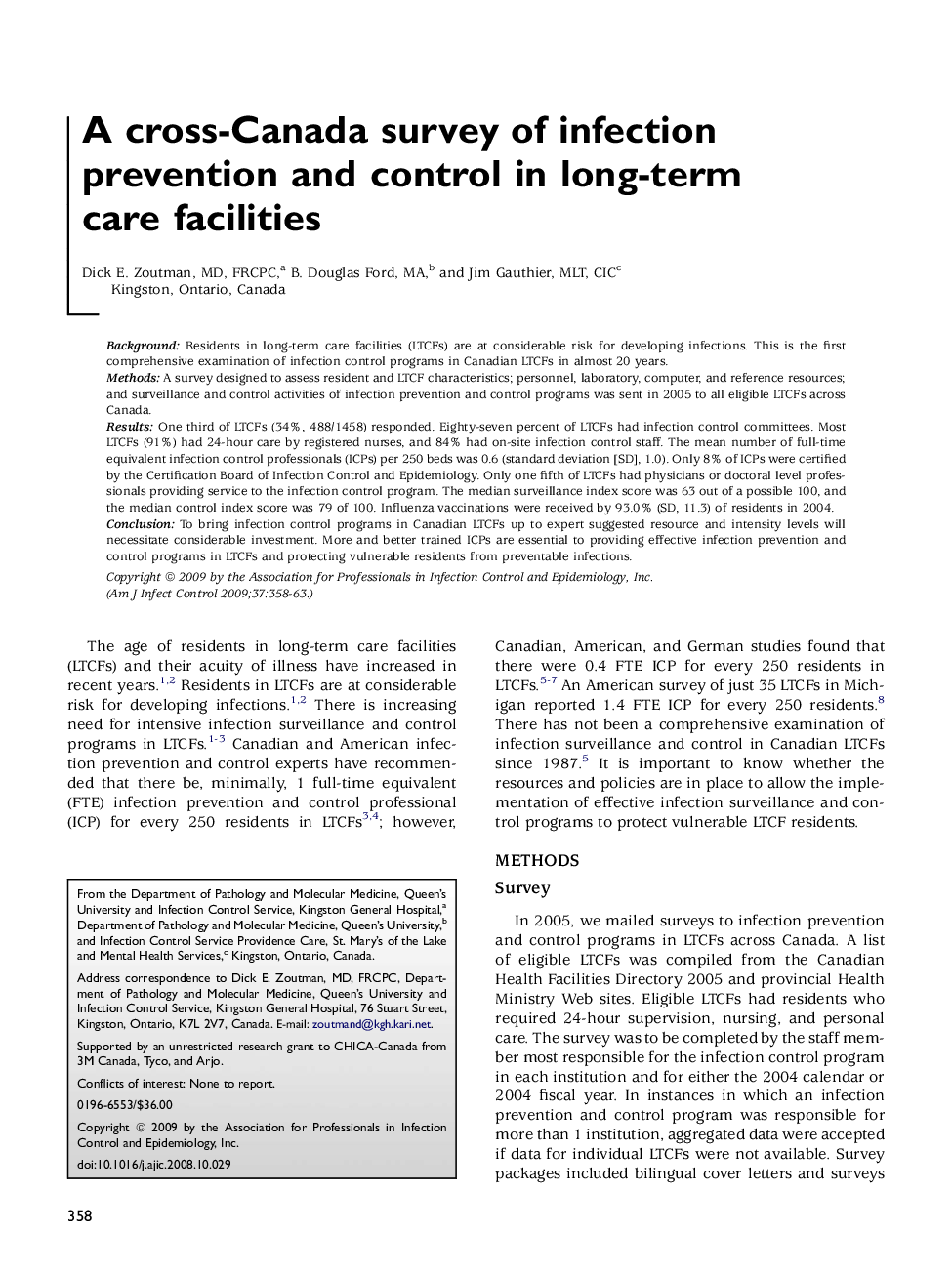| Article ID | Journal | Published Year | Pages | File Type |
|---|---|---|---|---|
| 2640021 | American Journal of Infection Control | 2009 | 6 Pages |
BackgroundResidents in long-term care facilities (LTCFs) are at considerable risk for developing infections. This is the first comprehensive examination of infection control programs in Canadian LTCFs in almost 20 years.MethodsA survey designed to assess resident and LTCF characteristics; personnel, laboratory, computer, and reference resources; and surveillance and control activities of infection prevention and control programs was sent in 2005 to all eligible LTCFs across Canada.ResultsOne third of LTCFs (34%, 488/1458) responded. Eighty-seven percent of LTCFs had infection control committees. Most LTCFs (91%) had 24-hour care by registered nurses, and 84% had on-site infection control staff. The mean number of full-time equivalent infection control professionals (ICPs) per 250 beds was 0.6 (standard deviation [SD], 1.0). Only 8% of ICPs were certified by the Certification Board of Infection Control and Epidemiology. Only one fifth of LTCFs had physicians or doctoral level professionals providing service to the infection control program. The median surveillance index score was 63 out of a possible 100, and the median control index score was 79 of 100. Influenza vaccinations were received by 93.0% (SD, 11.3) of residents in 2004.ConclusionTo bring infection control programs in Canadian LTCFs up to expert suggested resource and intensity levels will necessitate considerable investment. More and better trained ICPs are essential to providing effective infection prevention and control programs in LTCFs and protecting vulnerable residents from preventable infections.
